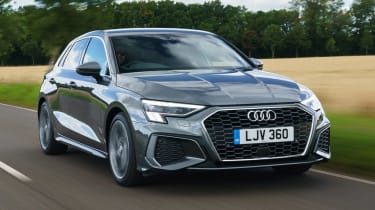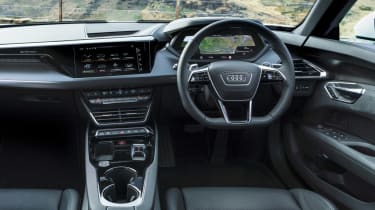If you're in the market for a premium vehicle, read on to discover which brand suits your preferences.
A Glimpse into History
Mercedes-Benz: The Pioneer
Mercedes-Benz, the oldest luxury car manufacturer, started its journey in 1900 under the name 'Benz & Cie'. It revolutionised the automobile industry with its expertise in the invention of the internal combustion engine. The brand received its current name after a merger following the First World War, and it has been synonymous with luxury and innovation ever since.
Audi: The Listener
Audi, which means "listen!" in German, was launched in 1910 with its first car, the Type A Sport-Phaeton. The brand derived its name from one of its founders, August Horsch, translating his surname into Latin. Audi has consistently delivered high-quality vehicles with a special focus on technology and innovation.
BMW: The Aviation Specialist
BMW, or Bayerische Motoren Werke, started its journey as an aircraft engine manufacturer in 1916. The brand transitioned into the automobile sector in 1928, but the aircraft propellors in the BMW logo still pay homage to its origins. BMW has been producing sports and luxury cars, offering a unique blend of performance and opulence.
The Art of Trim Levels
Choosing a car from these top-tier manufacturers involves not just selecting the model but also picking from a variety of trim levels. These trims, with their unique features, let you decide how well-equipped your car should be.
Audi Trims: Technik to RS Models
Audi starts with the Technik entry-level trim, which includes standard tech like Apple CarPlay, Android Auto, MMI Navigation Plus infotainment, and LED headlights. The S line models offer sportier styling, lower suspension, sports seats, and larger alloys. If you're looking for something performance-based, the Audi S and RS models with their impressive quattro all-wheel drive system and fiery engines are worth considering.

BMW Trims: SE to M Sport Models
BMW models start with the SE trim level, offering features like a color infotainment display, rear parking sensors, and cruise control. The Sport trim adds upgraded wheels and suspension, while the BMW xLine models offer features like adaptive suspension and digital driver display. The top-tier M Sport models come with impressive engines, sportier design, and a lower ride on larger wheels.

Mercedes Trims: SE to AMG Line
In the Mercedes lineup, most models start with the SE trim, offering features like keyless start and heated front seats. The Sport model offers standard kit like 17-inch alloys and sportier styling, while the AMG Line models offer iconic AMG styling and larger alloys. The AMG Line Premium Plus model is the range-topper, offering features like upgraded safety tech and a panoramic sunroof.

The Reliability Factor
All three manufacturers have been highly rated for both reliability and safety. Consumer reliability surveys and Euro NCAP ratings show positive findings for these brands. However, Mercedes and BMW seem to score higher in terms of reliability, with Audi models like the A3 and A6 generally sitting below them. BMW models like the 3 Series and X5 and Mercedes models like the A-Class and GLA score well and are positively reviewed.
The Verdict: Audi, BMW, or Mercedes?
The final decision between Audi, BMW, or Mercedes is largely subjective. Each manufacturer offers high-quality vehicles with plenty of tech, style, and impressive engine options.
Audi, despite being third in terms of reliability, offers high-quality models with luxurious interiors and a variety of trim options. BMW is known for its impressive drive and fiery engines, while Mercedes models are loved for their sleek and timeless styling.
The Naming Strategy: Audi’s Unique Approach
Unlike its competitors, Audi's naming strategy is a bit different. Saloon, coupe, and hatchback models are prefixed with the letter 'A'. High-performance versions replace the 'A' with an 'S'. Estates are known by the name 'Avant' and SUVs are denoted with a 'Q'. The most driver-focused, high-performance models begin with the letters 'R' or 'RS'.

The Audi Edge: Reserved Character
Audi has a distinct character that focuses on quietness and refinement to enhance the driving experience. The priority here is on overall quality, rather than driver excitement. Most Audi vehicles are known to have good drive quality, although the suspension can be a bit stiff for some on the sportier models.
Mercedes-Benz: The Luxury Connoisseur
Mercedes-Benz is known for its self-consciously high-class vehicles. The brand's focus on luxury is evident in its pristine interiors and exclusive features. However, its old-school nature and high asking price make it the most inaccessible option among the three.

BMW: The Driver’s Delight
BMW focuses more on driving dynamics and performance, with a touch of luxury. Its motto, 'Sheer Driving Pleasure', encapsulates the brand's aim to provide the best driving experience possible. BMW cars tend to favor driver engagement, with emphasis on interior cabin space and top-notch infotainment systems.
Maintenance Costs: A Key Consideration
Maintenance costs can be a deciding factor when choosing between these three brands. While MOT, servicing, and brake and exhaust repair costs are roughly the same across all three brands, repair costs vary.
Audi cars have the most expensive repair costs, but they are the cheapest when it comes to repair costs for steering and suspension work, as well as for electrical and battery issues. Mercedes-Benz, on the other hand, is the most expensive when it comes to clutch replacements.
Conclusion
The choice between Mercedes, Audi, and BMW ultimately comes down to personal preference. Each brand offers a unique set of features and benefits that cater to a specific type of driver. Whether you prioritise luxury, driving experience, or a balance of both, there's a German luxury car that's perfect for you.
The battle of these German luxury car giants continues, and the true winner is the one that best meets your needs and preferences.
